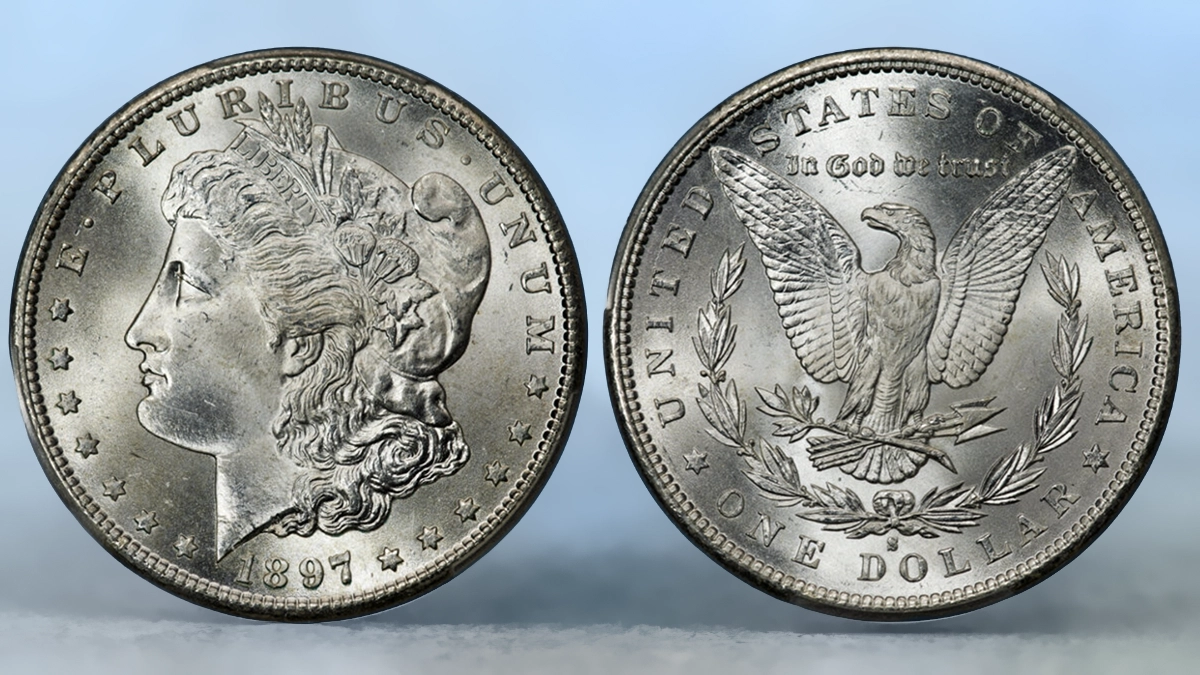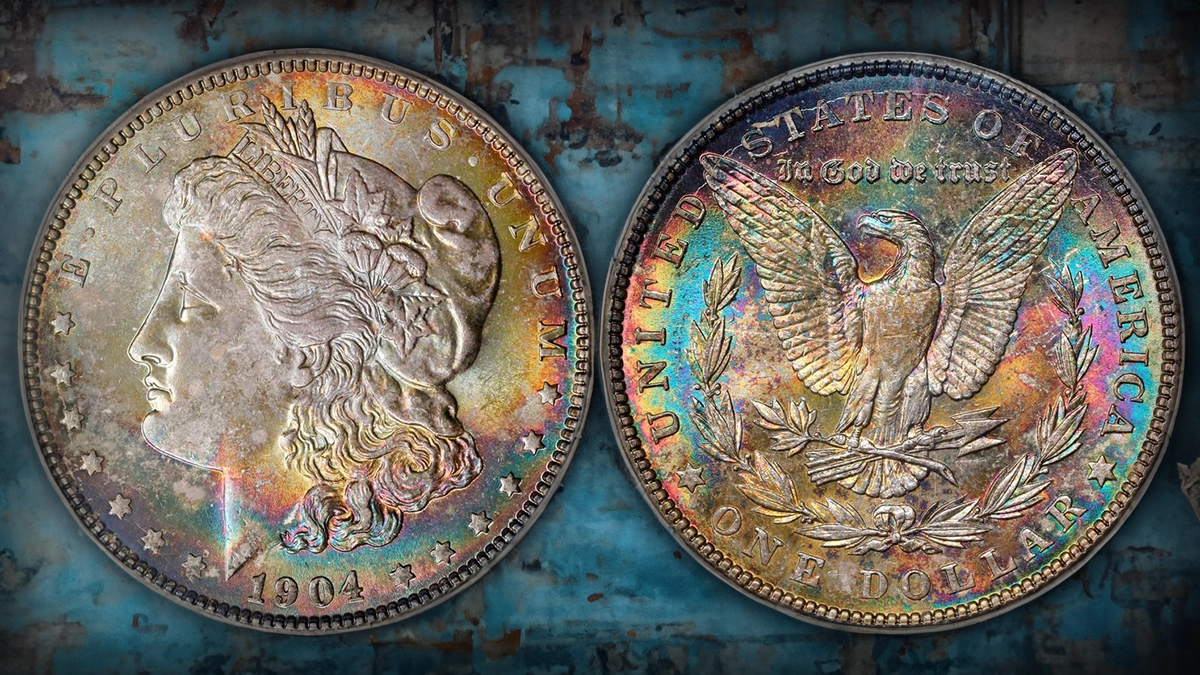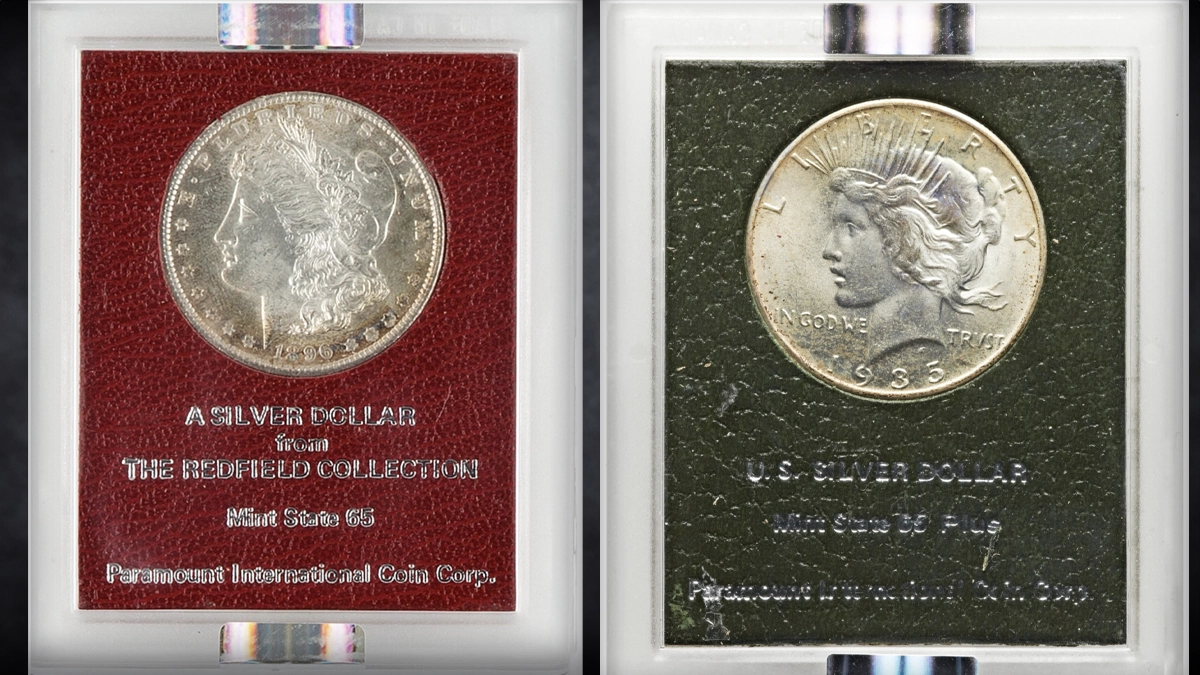By CoinWeek…
The Morgan Silver Dollar, minted from 1878 to 1904, and then again in 1921, is one of the most widely collected and iconic coins in American numismatics. While even common-date Morgans hold intrinsic and collector value, some specimens command truly astronomical prices. This premium is often driven by a convergence of four specific factors that elevate a coin beyond its simple grade and date.
1. Superior Eye Appeal

Eye appeal, often subjective, is a critical factor in determining a Morgan Dollar’s value, particularly in the higher Mint State (MS) grades. It refers to the overall visual impact of the coin. A coin with superior eye appeal will have full, sharp strikes that clearly define all design elements, lustrous fields—the flat areas around the devices (the design)—and minimal bag marks or surface distractions.
A coin that is technically graded MS65 (Gem Brilliant Uncirculated) but has dull luster and a weak strike will almost always trade for less than a coin with the same grade that “pops” with brilliant luster and a crisp strike. Collectors are willing to pay significant premiums for a coin that is visually stunning, often referred to as a “monster” coin.
While eye appeal is highly subjective, experienced buyers and sellers, who have seen enough coins, can quickly spot coins that look nicer than others. As a collector, you should strive to see as many coins as possible so that you can spot the coins that have superior eye appeal for your price point.
2. Beautiful Toning or Perfect Black and White

Toning is the natural discoloration or patina that forms on a silver coin’s surface due to long-term exposure to trace elements and gases in the environment, usually from the original canvas bags or paper wrappings they were stored in. While any toning technically reduces a coin’s “whiteness,” only certain types of toning are desirable.
Beautiful Toning (Desirable): This includes deep, vibrant colors like rainbow hues, deep blues, reds, and golds that form in an aesthetically pleasing pattern, often with rings or target patterns. This type of toning is often a sign of original, untouched surfaces and is highly sought after, with beautifully toned coins often selling for far more than a “white” counterpart.

Perfect Black and White DMPL (Desirable): These highly sought-after coins are technically untoned but exhibit an extreme contrast that provides unbelievable eye appeal. DMPL stands for Deep Mirror Proof Like; they have bright, frosty devices (raised design elements) and mirror-like fields (flat background areas). This stark, “black and white” contrast occurs on high-quality business strikes struck very early in a die’s life, giving these rare examples the impression that they are Proofs. The late Michael “Miles” Standish called these coins white ducks on a black pond.
Ugly/Splotchy Toning (Undesirable): Toning that appears dull, gray, black, or in uneven, unattractive blotches is considered detrimental to value and is often an indicator of improper storage or a lack of original surface integrity. Be cautious about toned coins, sellers of coins with mediocre or detrimental toning will often exaggerate and claim that these typically-tarnished coins have “rainbow toning.”
3. Scarce, But Popular VAM Varieties

The acronym VAM stands for Van Allen–Mallis, referencing the two numismatists who cataloged the numerous die varieties found on Morgan Dollars. A VAM variety is essentially a die imperfection or error that occurred during the minting process, such as doubled dies, significant die cracks, misplaced dates, or differences in the position of the mint mark.
While there are thousands of VAM varieties, only a select few are truly scarce and popular enough to command a premium. Popular VAMs are those that are easy to attribute (spot the error), such as the “Hot Lips” or “Clashed Eaglet” varieties, and are actively collected by a dedicated group of VAM enthusiasts. A Morgan Dollar that combines high-grade and a rare, recognizable VAM will be priced significantly higher than a standard-die coin of the same date and grade.
4. “Situational Rarity”
“Situational rarity” is a comprehensive factor that accounts for a coin’s desirability based on its specific context, often trumping its basic mintage numbers. It encompasses three main elements:
Unlikely Superlatives: Is the specific date unlikely to have the above-mentioned superlatives? For example, the 1894-O (New Orleans Mint) is a notorious conditional rarity because the vast majority of surviving Mint State examples are known for weak, flat strikes and mediocre luster. This makes a specimen that is sharply struck, exhibits great luster, and has superior eye appeal an extreme situational rarity. While common-date coins in this quality can sell for a premium, this quality on a notoriously poor-quality date like the 1894-O commands a disproportionately massive price because the combination is statistically improbable and demand for such a coin will always be high.
Popular Mint Mark Issues (The CC Mint): Coins struck at the Carson City (CC) Mint are historically popular due to the romantic association with the Wild West and the fact that the mint operated for a relatively short time. Even common-date CC Morgans carry a premium. A high-grade CC coin with beautiful toning and superior eye appeal represents the ultimate convergence of desirability.

Noteworthy Collection Provenance: A coin that has been part of a famous or recognized numismatic collection (e.g., the Wayne Miller, Jack Lee, Redfield, or Coronet collections) often carries a significant provenance premium. The coin’s history and guaranteed authenticity from a noted source add an extra layer of prestige and value that collectors are eager to acquire.
The Collector’s Edge: Building a Set with Premium Morgans
Understanding these four value-driving factors empowers the Morgan Dollar collector to move beyond simple date collection and begin assembling a truly premium set. This knowledge transforms the hunt from simply acquiring a coin to cherry-picking the best examples.
Instead of focusing solely on the numerical grade (e.g., MS65 or MS66), a discerning collector uses these factors to identify coins that are visually superior and likely to appreciate more:
- Prioritize Eye Appeal: Always seek coins with full strikes and vibrant cartwheel luster. A “low-end” MS-64 with phenomenal eye appeal often outshines a dull MS-65.
- Seek Natural Beauty: Hold out for Morgans displaying aesthetically pleasing, natural toning (rainbows, golds) and avoid pieces with splotchy, ugly, or questionable coloration.
- Leverage VAMs: When purchasing a common date, look for a recognized and popular VAM variety to add a layer of scarcity and specialty interest to your collection.
- Identify Situational Rarities: Be aware of the conditional challenges of certain dates (like the 1894-O) or mint marks (like CC). Finding a superb example of a date notorious for being poorly struck provides a significant advantage and high-end rarity for your set.
By prioritizing eye appeal, desirable toning, known varieties, and situational rarity, collectors can build a Morgan Dollar set that is not just complete, but one of exceptional quality and outstanding long-term value.
* * *
Do you want to see some Morgan dollars with monster toning? Check out this video of the Northern Lights Morgan Dollar Collection that was sold by Legend Rare Coin Auctions in 2016.
The post Four Factors That Make Certain Morgan Dollars Worth More Money appeared first on CoinWeek: Rare Coin, Currency, and Bullion News for Collectors.
